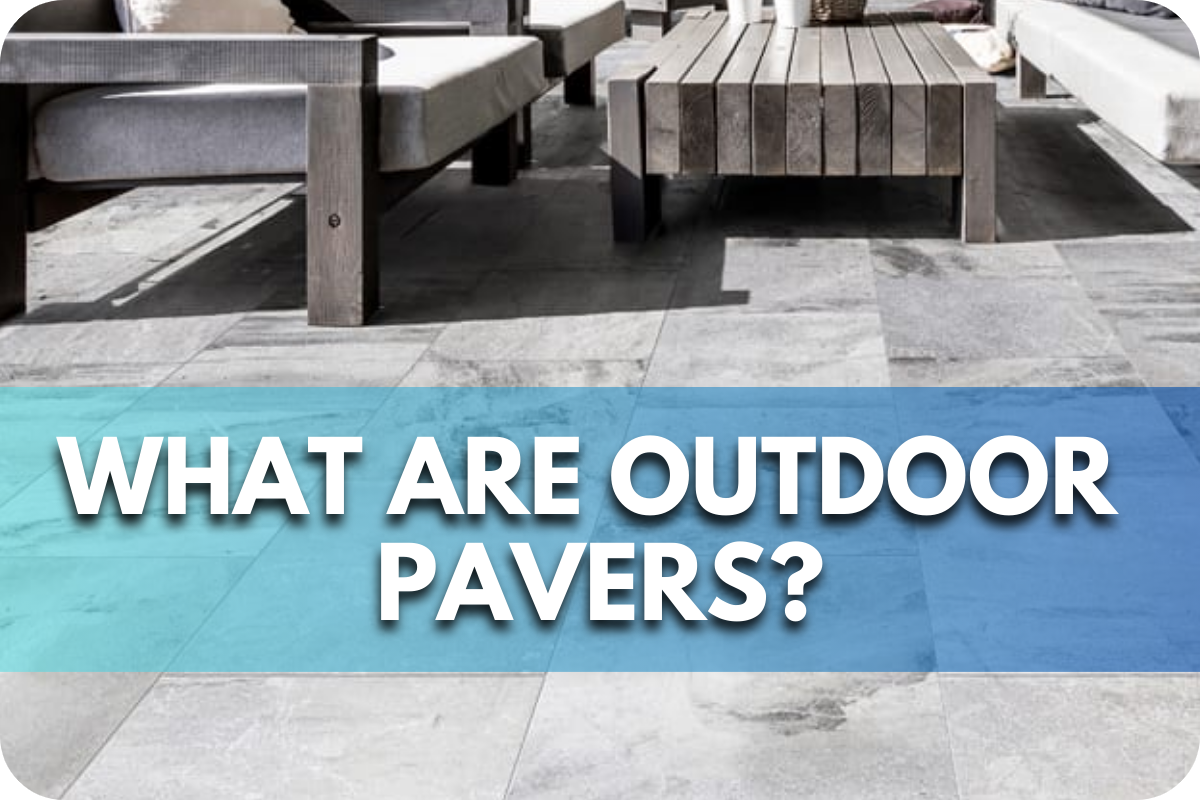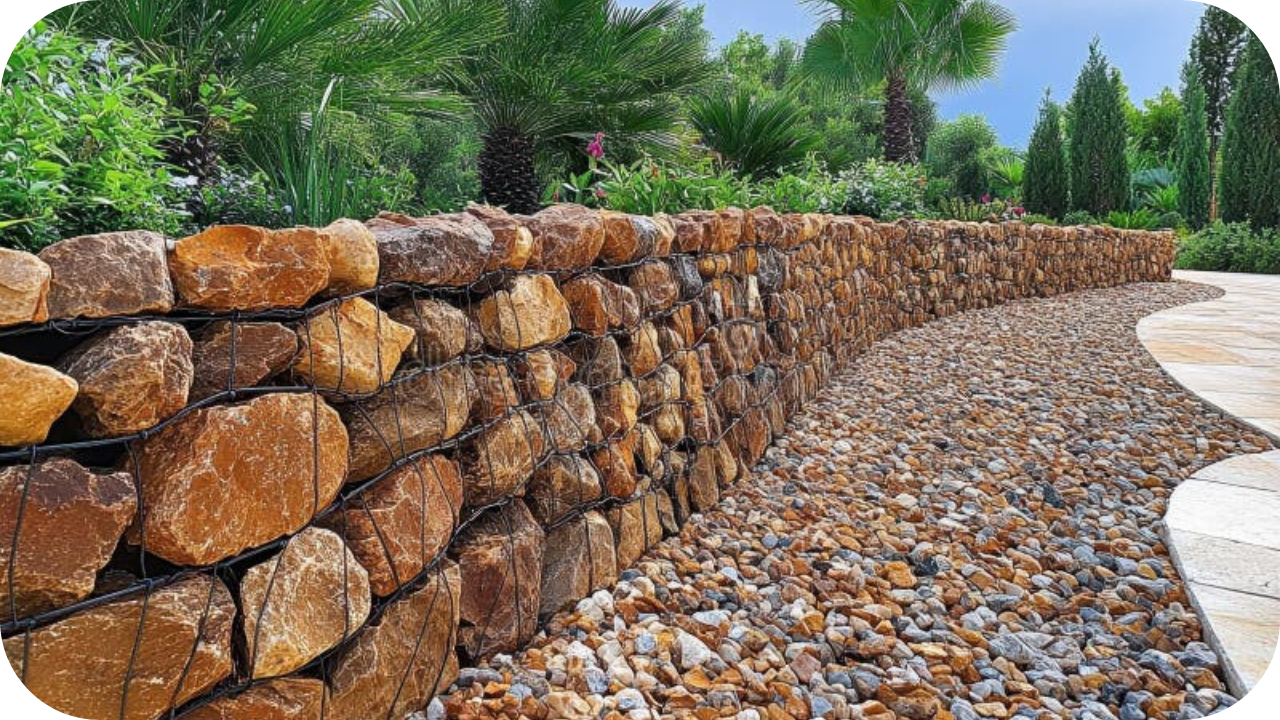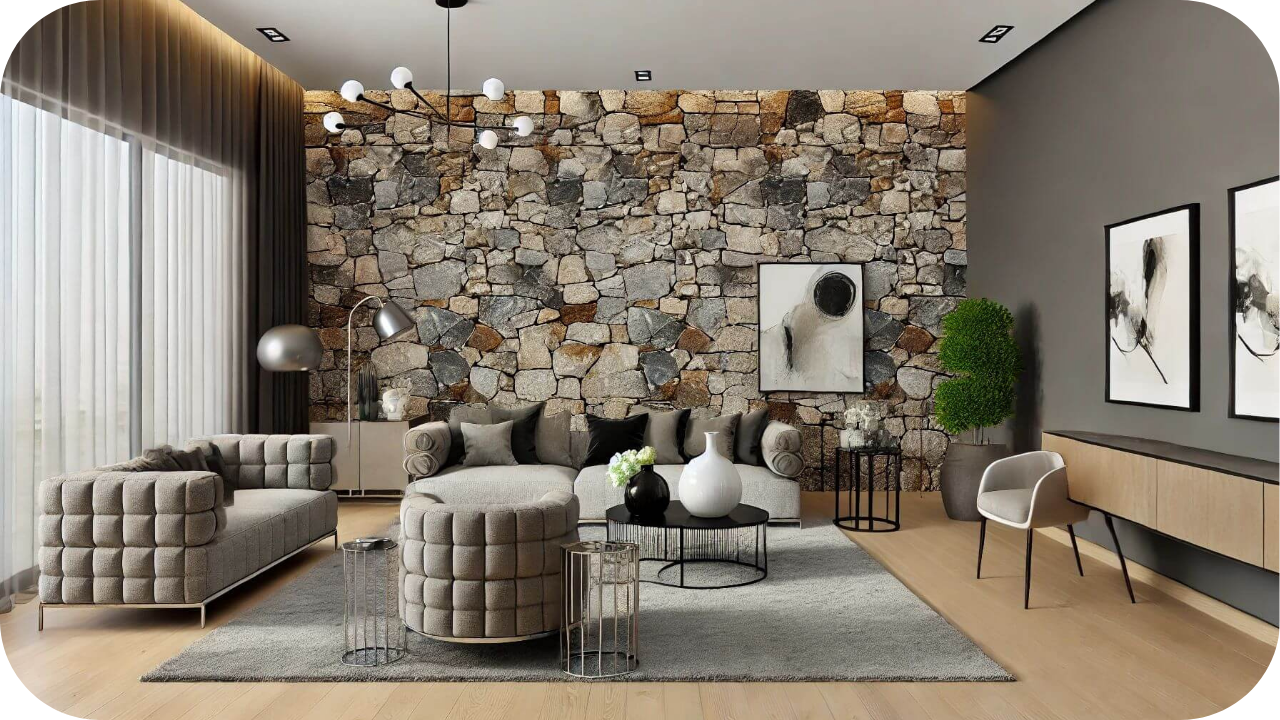
Tired of your dull and lifeless outdoor space? Are cracked concrete and boring patios leaving you uninspired?
Don’t settle for a lacklustre outdoor area that fails to reflect your style and personality. Your outdoor space should be an extension of your home, a place to relax, entertain, and enjoy.
Transform your backyard into a stunning oasis with outdoor pavers! These versatile and durable materials offer endless design possibilities, allowing you to create a unique and inviting space that perfectly complements your lifestyle.
What are Outdoor Pavers?
Outdoor pavers are flat construction materials from stone, concrete, or brick. They create durable and visually appealing surfaces for various outdoor areas. Typical applications include patios, walkways, driveways, and pool decks.
These pavers are designed to withstand heavy foot traffic and weather conditions, providing functionality and aesthetic enhancement to outdoor spaces.
They come in various shapes, sizes, colours, and finishes, allowing for versatile design options that complement any landscape or architectural style.
Types of Outdoor Pavers
Outdoor pavers come in multiple types, each offering unique benefits and aesthetic appeal. Here are the types of pavers available at Splendour In Stone:
1. Bluestone
Bluestone pavers are highly durable, weather-resistant, and slip-resistant, making them ideal for high-traffic areas.
Their natural blue-grey hue adds a sophisticated touch to any outdoor space. Bluestone pavers are perfect for patios, walkways, driveways, and pool surrounds, offering both functionality and timeless beauty
2. Granite
Granite pavers are known for their exceptional strength and durability. They can withstand heavy loads and extreme weather conditions, making them suitable for driveways, pathways, and commercial spaces. The natural speckled appearance of granite adds a touch of elegance and variety to any outdoor project.
3. Marble
Marble pavers provide a luxurious and refined look. They are typically used in high-end residential and commercial projects. While marble is more susceptible to weathering than other stones, its unique veining and classic appearance make it a popular choice for decorative elements in outdoor spaces.
4. Limestone
Limestone pavers offer a softer, more natural look compared to other stones. They are durable and weather-resistant, making them suitable for patios, garden paths, and pool surrounds. Limestone’s subtle colour variations and smooth texture create a calming and elegant outdoor environment.
5. Porphyry
Porphyry pavers are recognised for their natural beauty and durability. They come in various colours and are highly resistant to wear and weather conditions. Porphyry is ideal for driveways, walkways, and public spaces due to its unique texture and slip resistance.
6. Quartzite
Quartzite pavers are tough and durable, making them suitable for high-traffic areas. They are resistant to stains and weathering, and their natural sparkling appearance adds a distinctive look to outdoor spaces. Quartzite is ideal for patios, pool surrounds, and walkways.
7. Travertine
Travertine pavers provide a timeless and elegant appearance with their natural stone texture and warm colours. They are perfect for pool decks, patios, and garden paths due to their slip resistance and ability to stay cool underfoot. Travertine’s porous nature also provides good drainage, ideal for wet areas.
Why Choose Pavers?
- Durability and Longevity: Outdoor pavers are renowned for their exceptional durability and longevity. Pavers are designed to withstand heavy foot traffic, harsh weather conditions, and extreme temperature fluctuations, unlike poured concrete, which is prone to cracking and shifting over time. This resilience ensures that your outdoor space remains beautiful and functional for years.
- Design Flexibility: One of the most significant advantages of pavers is their design flexibility. With vast shapes, sizes, colours, and textures, you can create unique patterns, borders, and accents that perfectly match your aesthetic preferences. Whether you envision a classic herringbone pattern or a more intricate mosaic, pavers allow endless design possibilities.
- Low Maintenance: Pavers are a low-maintenance option for your outdoor space. Routine sweeping and occasional rinsing are required to keep them looking their best. If a paver becomes damaged, it can be easily replaced without affecting the surrounding area, unlike poured concrete, which often requires extensive repairs.
- Permeability: Permeable pavers offer an eco-friendly solution for environmentally conscious homeowners. These innovative pavers allow rainwater to seep through the joints and into the ground, reducing stormwater runoff and minimising the burden on local drainage systems.
Considerations When Choosing Outdoor Pavers
When selecting outdoor pavers for your project, several important factors must be considered to ensure you make the right choice that meets your needs and preferences. Here are some key considerations:
- Climate: The climate in your region plays a crucial role in determining the most suitable paver material. For instance, in areas with harsh winters and freeze-thaw cycles, you’ll need frost-resistant pavers, such as concrete or porcelain. Natural stone or brick pavers may be a better option in warmer climates as they can better withstand heat and UV exposure.
- Intended Use: The intended use of the paved area will influence the type of pavers you choose. High-traffic areas like driveways and patios require durable and slip-resistant pavers, such as interlocking concrete or porcelain. You may opt for more decorative options like natural stone or brick for low-traffic areas like garden paths or patios.
- Budget: Outdoor pavers come in a wide range of prices, with natural stone being the most expensive option and concrete being the most budget-friendly. Determine your budget upfront and consider the long-term costs, including installation and maintenance.
- Aesthetic Appeal: Pavers come in various colours, textures, and patterns, allowing you to create a desired look for your outdoor space. Consider your home’s overall design and architecture and choose pavers that complement the existing style.
- Maintenance Requirements: Some paver materials, like natural stone and brick, may require more maintenance than others, such as porcelain or concrete—factor in the time and effort you dedicate to cleaning and sealing your pavers.
Here is an article on How to Choose the Right Stone for Your Outdoor Pavers
Installation Process for Outdoor Pavers
Installing outdoor pavers is a multi-step process that requires careful planning and execution:
Step 1: Planning and Preparation:
- Determine the layout and design of your paver project.
- Calculate the needed materials, including pavers, base materials, and edging.
- Obtain necessary permits if required.
- Prepare the area by removing existing grass, debris, and any obstacles.
Step 2: Excavation and Base Preparation:
- Excavate the area to the desired depth, ensuring proper slope for drainage.
- Compact the subgrade to create a stable foundation.
- Install a base material layer, such as crushed gravel or compacted sand.
Step 3: Edging and Paver Placement:
- Install edging to contain the pavers and prevent shifting.
- Lay the pavers according to your chosen pattern, starting from a corner or edge.
- Use a rubber mallet to tap each paver into place gently.
- Maintain consistent spacing between pavers for joint sand.
Step 4: Cutting and Fitting Pavers:
- Use a masonry saw or splitter to cut pavers as needed to fit around obstacles or create desired shapes.
- Take precise measurements to ensure accurate cuts.
Step 5: Compacting and Jointing:
- Use a plate compactor to level and compact the pavers.
- Sweep joint sand into the gaps between pavers to lock them in place and prevent weed growth.
- Repeat the compacting and jointing process until the joints are filled.
Step 6: Final Touches:
- Clean the paver surface of any excess sand or debris.
- Seal the pavers (optional) to protect them from stains and enhance their colour.
Maintenance and Care of Outdoor Pavers
Proper maintenance and care can significantly extend the lifespan and beauty of your outdoor pavers:
- Regular Cleaning: Sweep or blow away debris like leaves, dirt, and sand to prevent staining and buildup. Rinse pavers periodically with a hose, avoiding high-pressure washing that can damage them. For stubborn stains, use a mild detergent and a soft-bristled brush.
- Joint Sand Maintenance: Check and replenish joint sand annually to stabilize pavers, prevent weed growth, and maintain drainage. Use polymeric sand for added durability and stain resistance.
- Sealing: While optional, sealing provides protection against stains, fading, and weathering. Choose a sealer suited to your paver type and apply it as per manufacturer guidelines, typically every 2-3 years.
- Additional Tips: Avoid harsh chemicals or de-icing salts, clean spills promptly to prevent stains, and trim overhanging vegetation to reduce debris and minimize moss and algae growth.
Applications of Outdoor Pavers
Outdoor pavers are incredibly versatile and can be used to transform various areas of your outdoor space:
- Walkways: Enhance the curb appeal of your property and provide safe, accessible pathways with pavers. Consider using different paver styles to create visual interest and define separate areas.
- Driveways: Opt for durable pavers that can withstand the weight of vehicles and heavy traffic. Permeable pavers are an excellent option for driveways, as they help manage stormwater runoff.
- Pool Decks: Surround your pool with slip-resistant pavers that stay cool underfoot and provide a comfortable surface for lounging and entertaining.
- Outdoor Kitchens: Create a stylish and functional outdoor cooking space with pavers. Choose materials that are resistant to heat, stains, and spills.
- Fire Pits and Seating Areas: Using pavers, design cozy gathering spaces around fire pits or fireplaces. Choose pavers that complement the overall aesthetic of your outdoor living area.
Conclusion
Outdoor pavers offer a versatile, durable solution for transforming outdoor spaces into beautiful, functional havens. Pavers allow endless design possibilities with various materials, styles, and applications.
Don’t settle for a dull backyard—explore the transformative power of outdoor pavers and create an oasis that reflects your unique style and personality.
More To Explore

8 Advantages of Using Stone Grid Gabions in Your Landscape
Are you seeking a durable, cost-effective solution to elevate your landscape? Stone grid gabions might be the perfect choice! These versatile, eco-friendly structures offer a

10 Stunning Feature Wall Ideas Using Natural Stone
Looking to elevate your home with a stunning feature wall? Natural stone offers a timeless, elegant touch that can transform any room. From sleek marble


